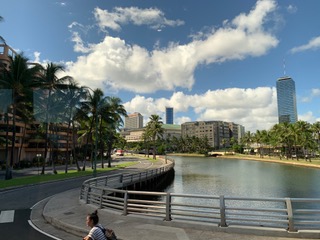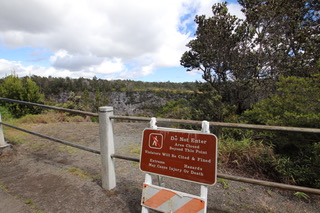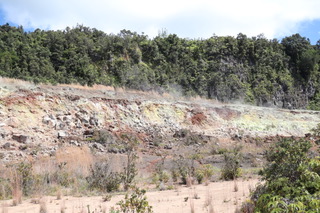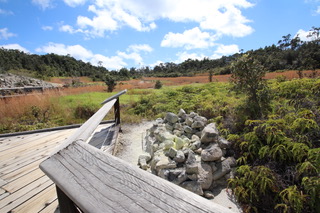We stayed at the historic Royal Hawaiian hotel (now owned by Marriott) on Waikiki Beach in downtown Honolulu.
Built on land formerly owned by Hawaii's royal family, the grounds are lush gardens and convey an element of quiet seclusion just steps from the high-energy along Waikiki.
The balcony of our room looked out over a shaded pool to the iconic beachfront. The Pacific water must be warm, because people were in it from early morning until very late in the afternoon.
If not for the palm trees, the view of Diamond Head from our balcony would have been spectacular ...
... as it certainly was right down on the beach!
Sunday, October 27. After a good rest overnight, we got out and about in the area around our hotel. Honolulu is a very modern, high-rise city ...
... with beautiful waterfronts inland as well as Waikiki ...
... and a very walkable, high-end shopping, restaurant and entertainment district paralleling the hotels and condominiums on Waikiki. We were very impressed!
At sundown, we had a lovely dinner at the Royal Hawaiian's beachfront restaurant, Azure. The food and service were great -- Pam enjoyed this Maui Beet and Big Island Goat Cheese salad ...
... and this fresh-seared local Hawaiian fish. A fine ending to our first full day in the Aloha State!
Monday, October 28. A shuttle picked us up at our hotel and took us about 45 minutes outside Honolulu to the Kualoa Ranch.
Kualoa is an outdoor scenic and recreation park, and it's no surprise that its vistas of volcanic mountains have served as a set for many movies and TV shows, including Jurassic Park.
The sign in the foreground indicates that this area was used in the film Jumanji. Well beyond the sign, 4x4 riders are enjoying their tour.
Kualoa has also recreated and preserved traditional Hawaiian dwellings.
After about an hour ride across the Ranch, we reached the activity we had come out for ... zip-lining!
All in all, we did 7 ziplines, covering about 2 1/2 miles in total. It took a run or two for us to get the confidence to let go like this. Fortunately, they had cameras in positions to take good action photos ... this was really a lot of fun!
We also had to cross several rope-and-wood bridges on the course. Stop jumping up and and down, Paul!!
This view from one of the platforms captures the scale and beauty of the Ranch.
Near the Visitor Center, the landscaping included lots of flowering plants. We completely enjoyed our outing to Kualoa Ranch!
Tuesday, October 29. We took a one-hour flight mid-day from Honolulu (on the island of Oahu) to Hilo (on the island of Hawaii, aka the "Big Island"). After picking up our rental car, we drove about 45 minutes to Volcano, Hawaii (seriously), and checked into our cottage at the Volcano Rainforest Retreat. This photo from the front door looks across the living room into the bedroom. ...
... and here is the adjacent kitchen. Our hosts delivered breakfast to order for each day, including delicious quiche, but we didn't even meet them until we were leaving after four days ... it's a beautiful place, almost hidden in the rainforest, and we could not have had more serenity and privacy. After settling in, we drove about 5 minutes to one of several homey, quirky and overall quite good restaurants in the small village of Volcano for an early dinner ... an easy arrival in what would prove to be a very interesting place!
Wednesday, October 30. Volcano is immediately adjacent (like 1 mile outside the gate) to the Hawai'i Volcanoes National Park. The Visitor Center and infrastructure are literally perched on the edge of the Kilauea volcano caldera ... it is "relatively quiet" at the moment (depending on your perspective), but the National Park Service says it is considered one of the most active volcanoes in the world.
From the Visitor Center, we drove a very short distance to the Kileauea Iki Crater, formed by a lava fountain eruption in 1959. This crater is about 400 feet deep ... the hiking trail across the crater's hard lava floor is currently closed due to "geological instability concerns" (see "relatively quiet" comment above).
From the crater rim, we hiked the Devastation Trail through a landscape buried in cinders from the 1959 lava fountain eruption. Signs of plant life are slowing emerging on the edges.
Even here, after 60 years, there are areas the rangers just don't want you to enter.
From Devastation Trail, we took a 38-mile roundtrip drive down the Chain of Craters Road, following enormous lava flows from the 3800-foot level of the Kilauea Caldera down to the ocean on the Big Island's southeast coast. As the road's name implies, we passed a number of craters in this geologically unstable area ... this overlook had been recently closed. ...
... but happily, we were able to follow a rim trail around to another vantage point.
Shortly beyond the actual chain of craters, we reached an area where the fissures in the ground from the Mauna Ulu eruption in 1969 are still visible. Here, you can see 3 pines trees basically growing right out of the big crack in the earth.
Further along our descent, we stopped at Kealakomo Overlook and Picnic Area for lunch ... it's in the left foreground of this photo. What an incredible view!
As we continued down the road, we could see many lava flows ahead ...
... some are old, with grass and plants almost hiding them, but some are very recent ... including the flows of 2018 that closed the Park and destroyed neighborhoods downslope that are still raw and black.
At many places, the road cuts through the flows ...
... and you can actually see how thick and high they are.
Near the bottom, we stopped to hike the Pu'u Loa Petroglyphs Trail. It leads to the largest array of petroglyphs in Hawaii (maybe 1/4 acre, surrounded by a boardwalk), that are revered and considered sacred by many native Hawaiian 'ohaina (families). The lava flows bearing the carvings are 400-700 years old.
Finally, we reached the ocean. The dark, fresh lava flows in the distance to the east are from the 2018 eruption, and still block the coast road we drove down. This is a very new coastline!
Looking west, the Ho'lei Sea Arch shows what can happen as older lava flows are eroded by the sea. Formed when small caves on both sides continued to expand until they met, this arch will in time collapse itself ... leaving a "Sea Stack" of rock in its place.
Thursday, October 31. This morning, we drove about an hour back into Hilo to visit the Hawaii Tropical Botanical Garden. In 1977, 56-year-old, newly-retired Dan Lutkenhouse and his wife Pauline bought an vacation home in Hilo, intending to fix it up and visit often. They were also shown a 17-acre property on the ocean ... so overgrown that a machete was needed to penetrate it, and filled with old cars, machinery, appliances and trash of all kinds. But they fell in love with it, and purchased it to make it a garden of serenity. For the next 8 years, Dan cleared, designed, collected and planted, built a lake, discovered hidden waterfalls, and carved out over a mile of esthetic trails through the Garden. Then, they created a charitable corporation and donated the property to it in perpetuity. No public funds were utilized, and it exists on admissions, donations and gift shop/plant revenues. It is a gem!
Dan designed the entrance boardwalk, which is 500 feet long and descends 120 feet into the ravine. You enter another world. The plants along the trails are exquisitely maintained ...
... the tropical trees soar (note the tiny person on the trail in the lower right of the photo) ...
... and waterfalls, streams and a small lake indeed run through it all.
Although they are not native, Hawaii is known as the "island of orchids" for their commercial success.
So it's no surprise that orchids are a focal point here ...
... the Garden contains all of the main genera of orchids that flourish in the Hawaiian islands, as well as several rarer ones.
Beyond the orchids, there are also any number of other, beautiful tropical flowering plants ...
... and nonflowering but equally distinctive species.
As we reached the bottom of the ravine, the show continued ...
... until we reached the water's edge, where the trails meandered, providing one great view after another.
Finally, we made our way back to the top of the ravine. What a spectacular place, and what a wonderful legacy for Dan and Pauline Lukenstein!
Late in the afternoon, we drove back into the Volcanoes National Park for dinner at the historic Volcano House, the latest of a succession of inn/restaurants that have overlooked the Kilauea Caldera since the 1870s. This was the view from our window-side table in the dining room. Note the steam/smoke rising from various places throughout the "relatively quiet" 2-mile wide crater.
Yes, the Volcano House is as close to Kilauea Crater as we say ... look beyond our table and out the windows. We had an amazing table, with a unique view and a fine meal, to end another great day on the Big Island.
Friday, November 1. On our last day in Hawaii, we returned to the National Park and started out from the Visitor Center on the 1-mile Crater Rim Trail. Yet another sign we had never seen before in our travels got our attention.
On this sunny morning, the views of the crater along the Rim Trail were glorious.
Soon, we understood the warning signs, as we came upon the steam vents. Here, rainfall and other groundwater turns to steam from the heat of the earth, without actually reaching contact with molten magma. So, it's steam without smell ... but it certainly got our attention!
Along the Rim Trail, areas were quickly marked off-limits with temporary signs ... you got the sense that conditions change quickly up here. The Park Rangers must be very busy and very astute!
In addition to the "geological instability" concerns, they have to protect us from fire ants. We hope they are well paid!
This overlook was placed off limits as a consequence of the 2018 seismic activity.
However, not far along the rail it was still open very near the cliff.
As we neared the end of the Crater Rim Trail, we came to a wonderful overlook with a unique sign. If you can't see it, it declares this a "Quiet Zone" and asks that we be quiet and reflective in respect of "cultural practices," presumably the native Hawaiian appreciation of this as a sacred site.
Shortly, we reached the current end of the Crater Rim Trail (shortened due to the 2018 events) and turned back toward the Visitor Center. A beautiful last look at Kilauea Crater.
As we retraced our steps, we caught this view of the trailside steam vents, with a busload of fellow tourists from a cruise ship in the distance. Quite enough "geological instability" for us!
Shortly, we veered away from the crater rim to take a short trail past the Ha'akulamanu (Sulphur Banks). At both ends of this 1/2 mile trail, you find yet another unique warning.
Right around the corner from the warning sign, we saw this section of trail ahead and thought it was pretty creepy ...
... but we persevered and were fine. In this area, the groundwater actually contacts magma, and rocks start to boil. The released steam contains sulfur and other minerals that both color the vents where they emerge (as you can hopefully see here) and are noticeable by smell.
This vent right along the trail gives even clearer evidence of this geological phenomenon.
After making it through the Sulfur Banks and back to the Visitor Center, we had another fine dinner and headed back down to the Rainforest Retreat. As we did, we passed this final road sign, uniquely suited to our absolutely fascinating visit to Hawai'i Volcanoes National Park ... "End Fault Zone." And the end of a great visit to Oahu and the Big Island!
***THE END***
































































